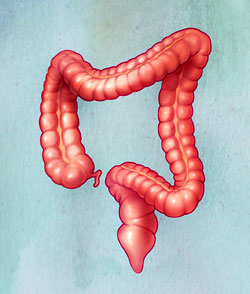 Colon polyps are growths that occur in the lining of the bowel. They can vary in size from less than a quarter of an inch to several inches in diameter. Their cause is unknown. But some experts believe a high-fat, low-fiber diet can contribute to the likelihood of developing polyps. There may be a genetic risk of developing polyps as well.
Colon polyps are growths that occur in the lining of the bowel. They can vary in size from less than a quarter of an inch to several inches in diameter. Their cause is unknown. But some experts believe a high-fat, low-fiber diet can contribute to the likelihood of developing polyps. There may be a genetic risk of developing polyps as well.
There are two common types of polyps: hyperplastic polyps, which are not at risk for cancer, and adenomatous polyps, which are thought to be the source for almost all colon cancers. Most adenomas never become cancerous.
FAQs
The biggest risk factor for developing polyps is being older than 50. A family history of colon polyps or colon cancer also increases the risk of polyps. If you have had polyps or colon cancer, you are at greater risk of developing new polyps than someone who has not.
Usually none. Larger ones can cause blood in the stool.
The best way to detect polyps is by screening individuals with no symptoms. There are several screening tests available, but the most accurate method is by colonoscopy, a thin, flexible, lighted scope that lets the physician visually inspect the colon.
They can be removed during the colonoscopy. Then they are examined under a microscope to determine what type they are and whether they are cancerous.
Polyp removal (or polypectomy) during a colonoscopy is a routine outpatient procedure. Possible but uncommon complications include bleeding from the removal site and perforation (a hole) in the colon, which only occurs in approximately one in 1,000 procedures. Bleeding from the polypectomy site can be immediate or delayed for several days, but persistent bleeding can almost always be stopped by treatment during the procedure. Perforations usually require surgery to repair.